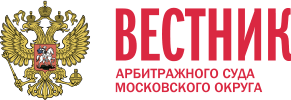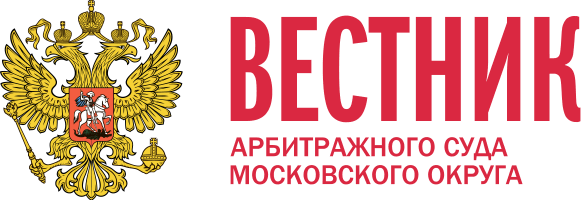- These Rules determine the uniform consideration procedure for articles submitted for publication in the Moscow District Commercial Court Bulletin (hereinafter referred to as the Bulletin).
- All articles considered for publication in the Bulletin are subject to internal and external (blind) review.
2.1.First, a staff writer or non-staff expert invited to contribute to the Bulletin shall determine whether the article is in compliance with the Bulletin format.
2.1.1. In case of non-compliance, authors will receive a reply indicating the reasons why their article will no longer be considered for publication and, if applicable, outlining possible areas for improvement to ensure further consideration.
2.2. Second, the articles that passed internal review and were deemed in compliance with the Bulletin format shall be subjected to external review. External review is conducted by renowned experts in the relevant field who have published papers on the same subject as the article in the last three years.
2.2.1. Reviewers should assess manuscripts using the following criteria:
— scientific and informative novelty (originality);
— relevance to the literature available, published data and current research on the subject;
— signs of plagiarism and other ethical violations or lack thereof;
— practical relevance;
— consistency of conclusions with obtained data, compliance of the article with the general and specific rules concerning structure, register and writing style, as well as terminology, clarity of data presented in tables, charts, diagrams, illustrations and formulas, proper formatting of individual references and the list of references, etc.
2.2.2. Review is conducted confidentially. Blind review implies that reviewers do not receive any of the authors’ personal information, whereas authors do not receive any information on their reviewers.
2.3.Editorial staffers responsible for the review process shall observe the limitations aimed at preventing conflict of interest when sending articles to be reviewed or making decisions on articles under review.
2.4.Authors whose manuscripts were rejected as the result of the review will receive a clear justification from the editorial staff.
2.5.All articles considered for publication are checked for plagiarism. The articles that failed the check will not be considered further, and the authors will be duly notified of the reason.
2.6.The articles that passed the consideration process and received a positive review will be sent to the editor-in-chief along with the review for approval to be published in a certain issue of the Bulletin.
2.7.The editorial staff shall keep all the reviews and promptly present them at the request of government agencies that oversee education and scientific research.
- Submission process
3.1. Submitted articles must contain the following:
— title;
— last name and initials of the author/authors;
— official name of the author’s/authors’ place of employment, and the city, postal code and country it is based in;
— abstract in Russian;
— keywords in Russian;
— title in English;
— BSI-transliterated (in Latin alphabet) first name, patronymic and last name of the author/authors (see https://antropophob.ru/translit-bsi for automated BSI transliteration);
— name of the author’s/authors’ place of employment, and the city, postal code and country it is based in, in English;
— abstract in English;
— keywords in English;
— full text in Russian;
— information on funding/sponsorship and acknowledgments (if applicable);
— list of references;
— information about the author/authors in both Russian and English.
3.2. The content of the article has to be presented in a clear and coherent manner, without lengthy introductions, repetitions and redundant paraphrasing of the data presented in tables and figures. Articles must be structured and include the following subheadings: introduction/brief overview of bibliography, purpose of research, materials and methods used, results and discussion, conclusion/brief summary. A less rigid structure is acceptable for theoretic and survey papers, but they also must be divided into sections. The subheadings for such articles are determined by their author/authors.
3.3. An article has to be under 40,000 characters with spaces total. Articles over 40,000 characters and featuring a considerable number of figures can be published with the approval of the editor-in-chief.
3.4. The list of references should reflect the up-to-date research conducted in the relevant field and contain literature references only, i.e. the list should not contain laws, court decisions, other official documents, online sources that have no authors, archive documents, statistical data compilations, encyclopedias and similar sources. References to unpublished or not-yet-printed works are unacceptable.
3.5. Proper format for the references is as follows:
— for articles in a journal: Author/authors (last name, initials). Title // Name of the journal. Year of publication. Volume (Т. or Vol.). Issue number (№ or No.). Pages from-to.
— for books: Author/authors (last name, initials). Title. City: Publisher, year of publication. Full number of pages.
— for articles in collections of articles. Author/authors (last name, initials). Title // Name of the collection / Eds. initials, last name. City: Publisher (no quotation marks), year of publication. Pages from-to.
— for research conference abstracts/materials: Author/authors (last name, initials). Title // Name of the abstract // Name of the abstract collection (as is on the cover). City: Publisher, year of publication. Pages from-to.
— for online publications: Author/authors (last name, initials). Title // Source. Year of publication. http://www…
3.6. Articles should be submitted as MS Word documents sent to the email address featured on the Bulletin website.
- Other provisions.
4.1. The consideration process takes up no more than 3 (three) months. By way of exception, the consideration period can be prolonged by the decision of editor-in-chief.
4.2. The editorial staff must notify authors on the duration of the consideration period and its prolongation.
4.3. If an article is approved for publication, authors are notified about what issue it will be published in and the approximate publication date.

